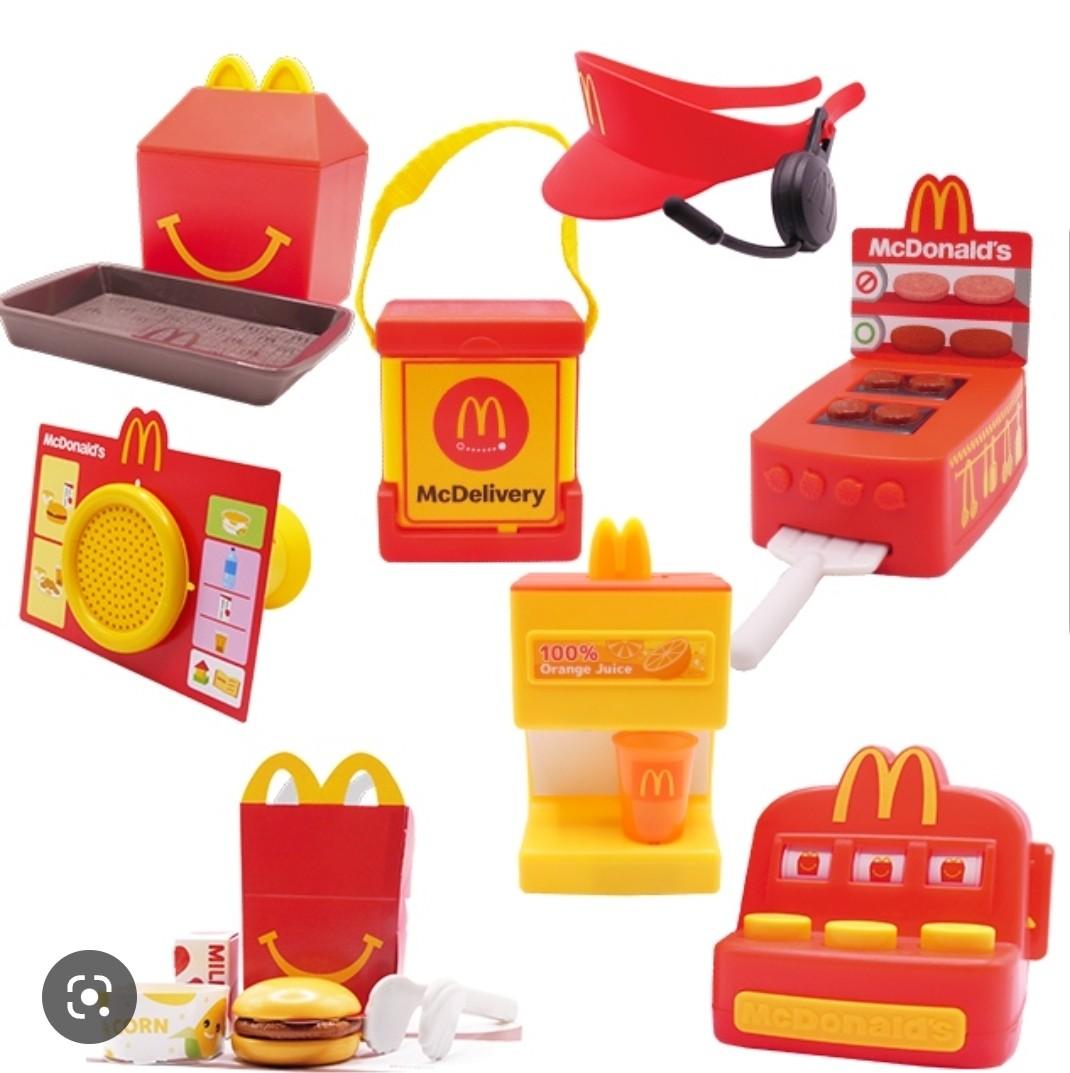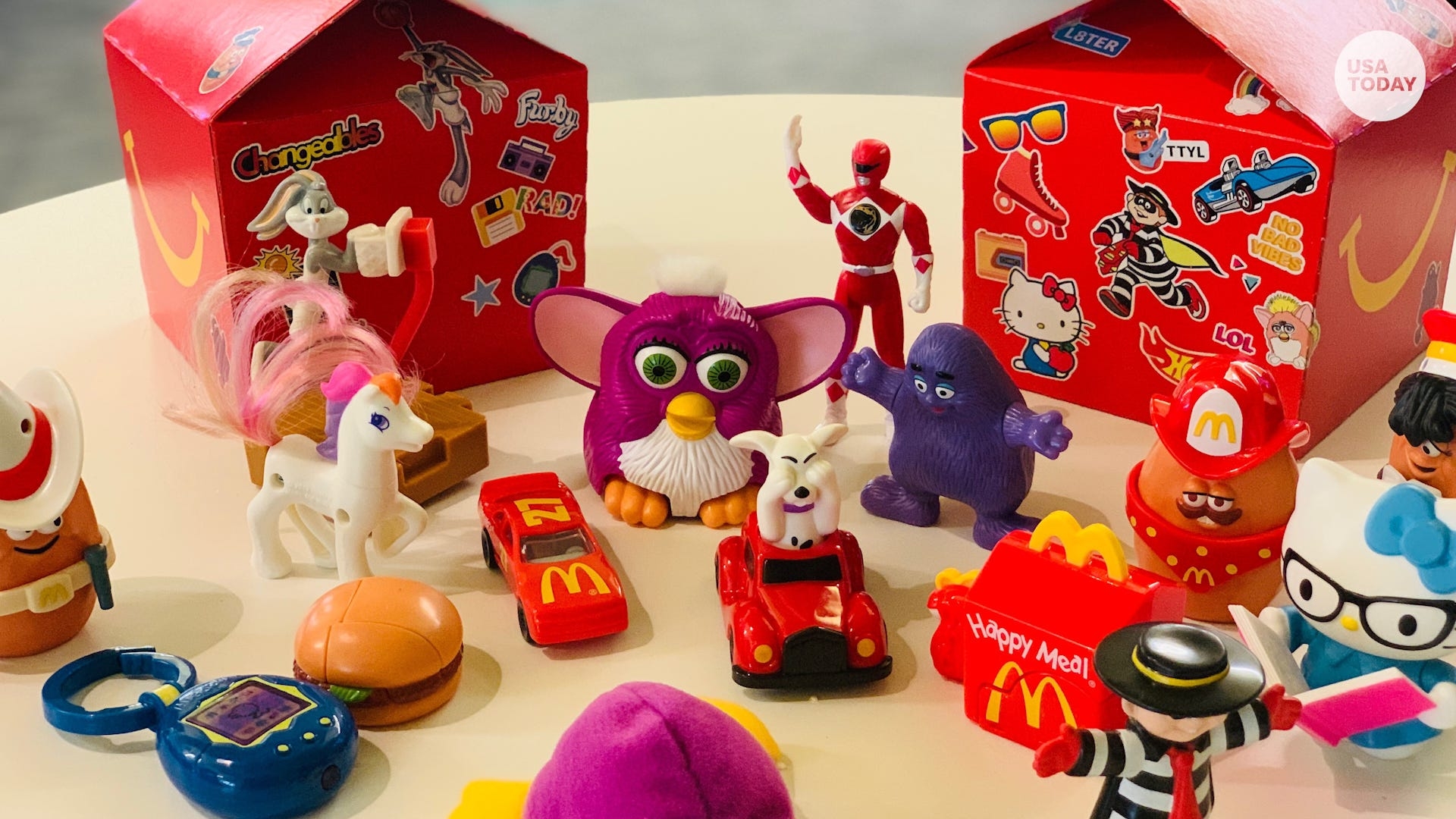Buy Coolest Happy Meal Toys - 2024's Hot Toys!
These promotional playthings, often plastic figurines or miniature versions of popular characters, are distributed as part of a McDonald's children's meal. These items serve as an incentive, encouraging the purchase of the meal. For instance, a recent promotion featured small, collectible figures from a popular animated film.
The inclusion of these items provides significant benefits, increasing the appeal of the meal for children and families. Historically, such inclusions have fostered brand loyalty and driven sales. The collectible nature of some items encourages repeat purchases and creates a sense of excitement and anticipation among consumers.
The following sections will explore the manufacturing, marketing strategies, and cultural impact related to this promotional practice, further detailing the phenomenon's evolution and its influence on consumer behavior.
- Jim Caviezel Net Worth 2024
- Noah Lalonde Siblings Meet His Sister Emma
- Kari Karte Has Been Sammy Hagar S
- Where To Find All The Princess Quest
- Antc3b3nio Guterres Wife Meet Catarina Marques
Frequently Asked Questions
This section addresses common inquiries regarding the small playthings offered with McDonald's Happy Meals, providing clarity on their purpose, safety, and historical significance.
Question 1: What materials are typically used in the production of these playthings?
The composition of these items varies, but commonly includes plastics such as polypropylene and ABS. Certain components may be comprised of painted metal or cardboard. Regulations necessitate materials meet safety standards, particularly regarding lead content and potential choking hazards.
- Taylor Swift Buys A 2 5 Million
- French Montana Says Max B Might Be
- Robert Hernandez Bio Age Wiki Facts And
- Has Adam Lambert Been With A Woman
- Samadhi Zendejas Age Biography Net Worth Boyfriend
Question 2: Are these items subject to safety regulations?
These items are regulated by consumer product safety standards in various countries. Standards address issues such as small parts, sharp edges, and chemical content. McDonald's is responsible for ensuring their suppliers adhere to these regulations.
Question 3: What is the historical origin of including playthings with children's meals?
The practice dates back to the late 1970s with early instances focused on simple toys and promotional items. The concept was developed to increase the appeal of children's meals and drive family business.
Question 4: How does McDonald's choose the playthings included in Happy Meals?
Selection involves partnerships with entertainment companies, brand licensing agreements, and marketing research. Factors considered include the popularity of licensed characters, the suitability of the toy for the target age group, and the ability to align with current trends.
Question 5: What is the environmental impact of these promotional items?
The production and disposal of these items contribute to environmental concerns, particularly regarding plastic waste. McDonald's has implemented initiatives aimed at reducing the use of plastic and exploring more sustainable materials. Recycling programs and responsible disposal methods are also encouraged.
Question 6: How do these promotional items impact McDonald's business strategy?
These items are integral to McDonald's marketing strategy, serving as a key differentiator in the fast-food market. They drive sales, increase brand recognition, and foster customer loyalty, particularly among families with young children. These also allow McDonald's to leverage popular cultural trends, through partnerships with popular franchises.
In summary, these promotional items are a complex element of McDonald's marketing, involving safety considerations, environmental impacts, and strategic business objectives.
The next section will analyze the long-term impacts and social influence of these promotional campaigns.
Guidance Regarding Collectibles From Children's Meal Promotions
This section offers advice pertaining to the acquisition, preservation, and potential disposition of small playthings commonly obtained with children's fast-food meals.
Tip 1: Assess Condition Upon Receipt: Upon acquiring such an item, promptly examine its condition. Note any manufacturing flaws, damage, or missing components. This initial assessment informs subsequent decisions regarding storage, display, or valuation.
Tip 2: Document Acquisitions: Maintain a record of each acquisition, including the date of purchase, the specific promotion associated with the item, and any identifying marks or serial numbers. This documentation aids in establishing provenance and facilitates potential resale or appraisal.
Tip 3: Employ Proper Storage Techniques: Protect the item from environmental damage by utilizing appropriate storage methods. Acid-free containers, archival sleeves, and climate-controlled environments minimize degradation and maintain the item's structural integrity.
Tip 4: Research Market Value: Periodically research the market value of comparable items. Online auction sites, collector forums, and appraisal services provide data on current market trends and demand. This information informs decisions regarding sale or insurance coverage.
Tip 5: Consider Professional Appraisal: For items deemed potentially valuable or historically significant, seek a professional appraisal from a qualified expert. A certified appraiser can assess the item's authenticity, condition, and market value, providing a formal valuation for insurance or estate planning purposes.
Tip 6: Be Aware of Reproduction: Familiarize yourself with known reproductions or counterfeit versions of popular collectible items. Scrutinize identifying marks, packaging, and materials to differentiate authentic items from fraudulent imitations.
Tip 7: Understand Grading Systems: Become conversant with established grading systems used by collectors and appraisers. Grading assesses the item's condition on a standardized scale, impacting its market value and desirability.
Tip 8: Document Rarity and Exclusivity: Determine if the item falls within limited or exclusive promotional runs. Rarity influences its value, therefore thoroughly documenting any specific information about this promotional item.
Adherence to these guidelines promotes responsible stewardship and informed decision-making regarding the acquisition, preservation, and potential disposition of these small playthings.
The concluding section of this article will summarize key findings and offer final thoughts on the evolving landscape of these promotional collectibles.
Conclusion
This article has explored the multifaceted nature of promotional playthings distributed within children's meals. From their manufacturing and safety regulations to their role in marketing strategies and their impact on consumer behavior, these items represent a significant intersection of commerce, culture, and consumerism. The exploration of collecting practices and valuation methodologies further underscores the enduring appeal and economic implications associated with these often-overlooked objects.
As the fast-food industry continues to evolve, so too will the form and function of promotional items. A deeper understanding of their historical context, cultural significance, and economic impact is essential for consumers, collectors, and industry stakeholders alike. Continued research and responsible consumption are crucial to navigate the ever-changing landscape of these promotional collectibles.
- Tiffany Lau Bio Age Wiki Facts And
- Matt Lauer Net Worth In 2024 How
- A Glance At Ayana Fite Net Worth
- Kanwal Rekhi Net Worth Income Salary Earnings
- What Happened To Tina Turner S Sister

Mcdonald'S Happy Meal Toys 2024 Today Nanci Pepita
/cdn.vox-cdn.com/uploads/chorus_image/image/65620985/h_happy_meal_40_d.0.jpg)
Happy Meal Toys March 2024 India Nelly Yevette

Happy Meal Toys 2025 Philippines Rami Leena